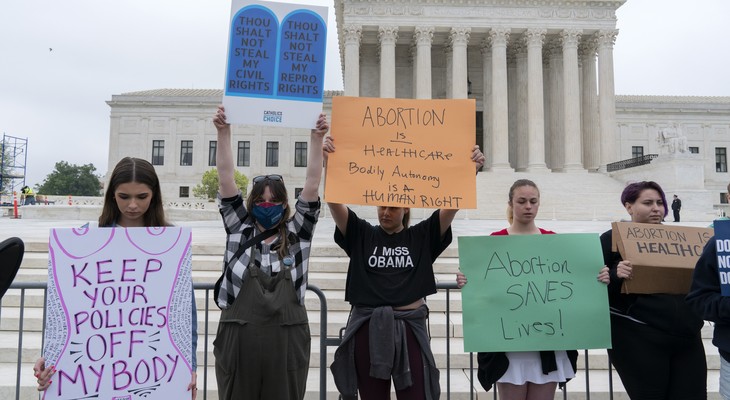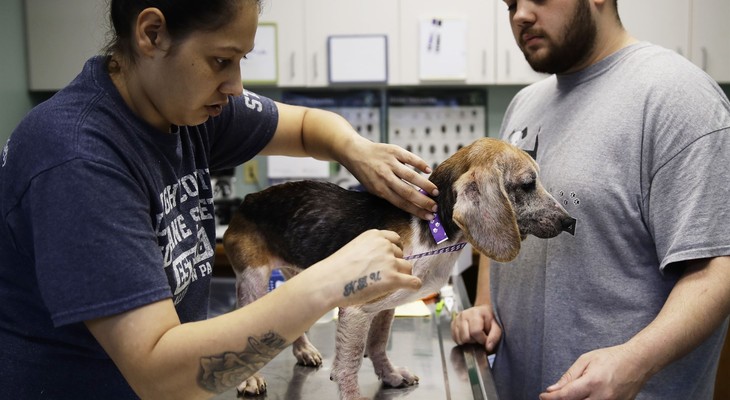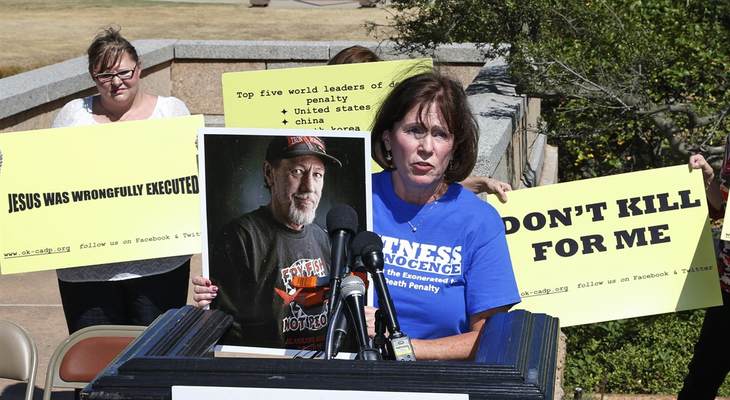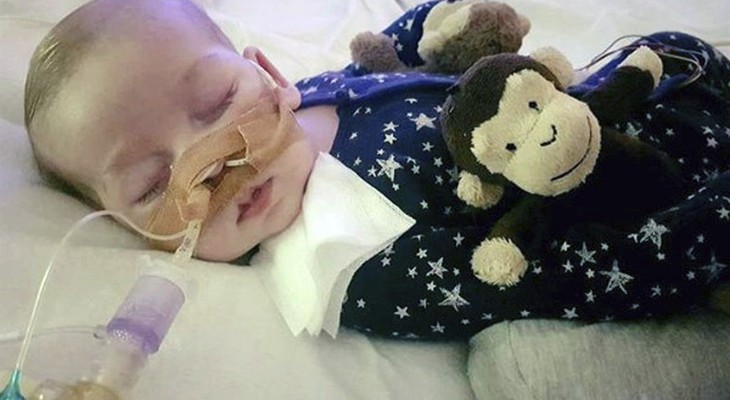Sarah Palin is famous for a few things: being the first female GOP pick for vice president; providing actually funny fodder for the ever-sinking Saturday Night Live; and giving “hockey moms” their day in the sun. Arguably, the most important thing she did politically was introduce America to the concept of death panels.
The media eviscerated her for it. PolitiFact awarded “death panels” as 2009’s Lie of the Year. Everyone from NPR to Forbes wrote hundreds of thousands of words declaring Palin a liar and the notion a myth. As time has unfolded, however, truths have been revealed.
This in-depth article is not meant to state that Sarah Palin was right, nor is it aimed at vindicating the legacy media. To be honest, I have beef with both. Rather, it will show you that death panels have been around for a long time, in plain sight. One of the few things I agree with Sarah Palin on is this: you will not see the words “death” and “panel” next to each other in any legal document.
However, death panels are real.
They are funded with your tax dollars.
They are advocated for in the public square.
They are accepted in various forms by both liberals and conservatives.
Shocking, I know. Reader, beware — you may just get red-pilled here because, once you see this, you won’t be able to unsee it. If you choose to bail, here’s a cute little sloth to show there are no hard feelings. But you won’t, will you? You want to prove you are not on board with death panels, don’t you?

Death Panels Are “Essential Components” of Healthcare
Induced abortion is an essential component of women’s health care. Like all medical matters, decisions regarding abortion should be made by patients in consultation with their health care providers and without undue interference by outside parties. Like all patients, women obtaining abortion are entitled to privacy, dignity, respect, and support.
A panel, after all, is a group of people gathered for a common purpose. In this case, it’s a doctor, a woman, and her unborn baby. She wouldn’t be there if she were not pregnant and, given the chance for that “clump of cells” to mature, it will lead to the birth of a human baby. Like the ACOG says, “facts matter,” so I will not be using the word “fetus” in this segment.
Here we have a group of people gather to decide one of them needs to die to benefit the others. The mother takes her case to the doctor who agrees to provide the service. The mother “gets her life back” and the doctor receives payment; both view themselves as winners, and the baby dies.
You may be saying, “Ashley, this is lame. I am pro-life and anti-abortion. I am not in favor of death panels!” All of that may be true, but the purpose of this first Death Panel is:
- to form a consensus on the definition of a panel
- establish that abortion is, in fact, a death panel
- recognize that the life-or-death decision is made by those who will not die.

Death Panels Are Legal
Cathy Martinez was diagnosed with stage 4 kidney cancer in 2020. She credits her survival to prayers, a strong support network, a competent doctor, and Keytruda, a medication proven effective against aggressive cancers. Over the summer, her insurance provider, Medica, determined it would not longer cover the drug. According to their own statement, “Like other health insurers, Medica applies nationally recognized, evidence-based criteria that guides coverage for safe and effective use of medications.” Read between the lines: insurance companies don’t care about what works specifically for you, even if your doctor advocates for you, as Martinez’s doctor did, for her continued use of Keytruda; they go off of what the country’s consensus of physicians and extraordinarily high-cost, low-sample studies say.
The Medica statement continues, “[Nationally recognized, evidence-based critieria] ensure[s] that members receive the appropriate medication or service, and that it is being used safely.” Even so, Martinez’s oncologist requested an opportunity to prove his patient’s case was normal and Keytruda was a crucial part of her survival. Medica said the nationally recognized, evidence-based criteria was 24 months of Keytruda. Martinez’s appeal was denied.
I am petrified going off of it because it’s really been what saved my life.
— Cathy Martinez, Lincoln, Neb.
Prayers and support are great, but they’re not Keytruda great, I guess. While Medica will say, “These decisions are not made on cost,” what they won’t come right out and say is that each dose of Keytruda is $28,000.
If the standard is 24 months, that’s 34 doses. Medica paid $952,000. Is that enough? Martinez still has cancer, so no, it’s not. But that doesn’t jive with what the nationally recognized, evidence-based criteria says. Fortunately, Merck gifted a year of Keytruda to Martinez after her story raised eyebrows in the media, Congress, and public conversations. Let’s hope Martinez is cancer-free this time next year so she doesn’t have to go through this fear and stress again because no one with a terminal illness should have to worry about buying the equivalent of a new car every three weeks.
Insurance companies can claim costs have nothing to do with these decisions, but they are for-profit companies with shareholders, executives, and employees counting on them for payment.
Imagine you take your beloved dog to the vet and, oh no, it’s cancer. This pup has been with you through moves and jobs and raising kids — you have whole passwords dedicated to your furbaby. The vet can operate but there’s no guarantee she can get all of the cancer and warns it may be more harmful than medication therapy. Chemotherapy will start around $4,500. You know you don’t have that kind of cash just lying around; some in savings, sure, but the engine light in your car just came on and you must have a car to get across town to work. So you ask about the surgery. It’s $1,500, no guarantees.
Congratulations, you just made a decision based on cost.
Related: $6 Billion in Iranian Assets Buys What, Exactly?
The difference between the Martinez-Medica situation and yours with your pooch is you love your dog. You’re going to cry when your dog dies, maybe take the day off work; insurance employees are going to take another call or stamp another letter. Insurers, like all businesses, have to balance profits and losses. While good people work at insurance companies, the guy on the other end of the phone line doesn’t get to make the decisions, and we’re all at the mercy of the suits who are far removed from our reality of budgets and disease. In essence, a panel of people decide the common good is not your life-saving medication.
They won’t come out and say they’re sentencing someone to die, but they will refuse to pay for the life-saving treatment that no ordinary person can afford. She says potayto, he says potahto, I say death panel.

Death Panels Are “Justice”
I will never forget studying abroad in Spain, meeting some Santander locals on a beach, and them asking, “¿De dónde eres?” or “Where are you from?” Like any good Texan, I said, “Texas!”, not “the United States.” One of the teens grinned broadly and mimed sitting in a chair, then proceeded to roll his eyes back in his head, shake his body, and make a “zzzzzz” sound. The electric chair. Like any good Texan, I smiled and said, “That’s right. Don’t mess with Texas!” I was 18, and capital punishment in Texas was as normal as ordering your burger with mustard, not mayo. Not that it happened often, but that it wasn’t a big deal when it did.
Oh, that I would go back and shake that 18-year-old version of myself. How clueless I was!
For as long as man has had an idea of crime, we’ve also held one of punishment. Guillotines, public hangings, stoning, burning at the stake, firing squad, electric chair, lethal injection — it’s all the death penalty. A jury or, in federal cases, a judge decides not only if a person is guilty but also if her crime is severe enough for execution or life without parole. The only difference between capital punishment and life without parole is whether the end is in sight. Regardless of the sentence, that person will die under the circumstances decided by the judge and/or jury.
Do I sound like a broken record yet? Good, you’re getting it! This panel comes together to decide the fate of a person who no longer has a right to an opinion or vote. We the citizens give legitimacy this death panel.

Death Panels Are Newsworthy
In the UK, two individuals rose to celebrity status when the government denied access to care for their rare medical condition. In 2017, Charlie Gard died one week before his first birthday from mitochondrial DNA depletion syndrome. The precious baby’s parents found a doctor experimenting with a treatment for the degenerative disease in the States and raised more than a million dollars to cover the family’s expenses, but the hospital said no. The hospital and parents could not reach an agreement, so the country’s high court decided it was in Charlie’s best interest for him to be taken off of the breathing machine. As legal back-and-forth battles waged, Charlie’s window of opportunity to benefit from the experimental treatment closed until the baby died on July 28. His parents’ rights never stood a chance against the government’s death panel.

Just last month, another UK patient with the same degenerative disease died after being denied access to further care, except she was 19 — old enough to have a voice and a vote, except she didn’t.
Doctors argued that it was ‘kindest option’ as the teenager was ‘actively dying’ – but she told the Mail she did not want to be pumped full of drugs and left to die.
‘I do not want this and want to try the treatment being offered abroad. It might only be a small chance but it is my only chance,’ she said just last week.
The patient died the week following her interview with the Daily Mail.
More than 120,000 in the UK are on a waiting list for medical treatment, according to The Telegraph, and some are dying while waiting. Americans should take note of this crisis because ideas that start in Europe migrate west:
- Carbon taxes were first levied in Finland
- Early socialism grew legs in France and Britain
- Assisted suicide began in France and Britain
- Unions were first established in Britain
The UK’s National Health Service (NHS) was launched in 1948 and was glorified for years as the world’s preeminent healthcare delivery system. Between the government funding, the pandemic, changes in workforce volume, and demand for services, the NHS slipped from first to fourth to ninth. In other words, a single-payer system designed at a set point in time, never mind the best of intentions, cannot account for future changes in population, technologies, or discoveries. As we advance, so do our costs, and never forget who holds the purse strings: it ain’t you unless you’re magnificently wealthy.
To put a pretty bow around this whole article, death panels have been in our midst for a very long time. The culture of death has crept into our hospitals, doctors’ offices, courtrooms, definitions of “fair” and “justice,” and even our medicine cabinets. We see death panels every day. Just thought y’all should know.










Join the conversation as a VIP Member